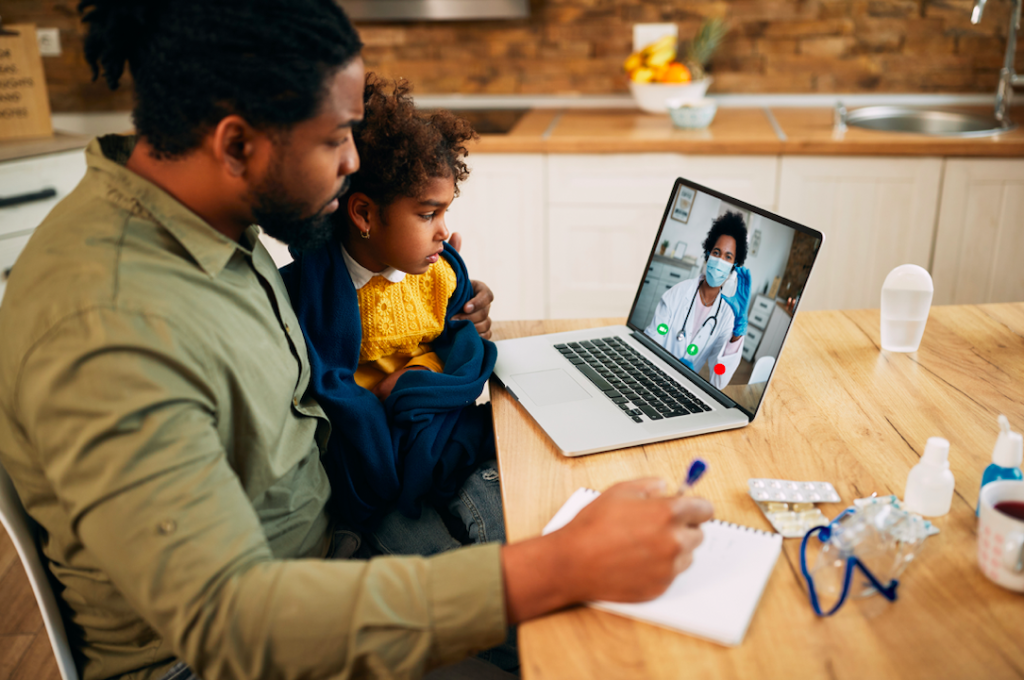Sunday Times Healthy Times
Telemedicine And Diabetes
The COVID-19 outbreak has disrupted every sphere of our lives. The hard lockdowns brought the country to a halt, while businesses, schools and even hospitals had to adhere to social distancing as a preventative measure to stop the spread of the virus. These measures facilitated the migration of health services online as the treatment of noncommunicable diseases such as diabetes needed to continue.
The recent Enabling Telemedicine for People Living with Diabetes: Focus on South Africa report by The Economist Intelligence Unit (EIU), supported by Abbott, has revealed that diabetes was the second leading cause of death in South Africa after tuberculosis (TB). The condition needs regular check-ins with healthcare professionals and close monitoring, which precipitated a shift to remote patient consultations and telemedicine in the country.
Telemedicine is widely defined by the World Health Organization as the electronic delivery of healthcare services at a distance “for the diagnosis, treatment and prevention of disease and injuries” to better the health of individuals and communities. The EIU report states that not only was there an increase in the use of telemedicine in the wake of the pandemic, but also a rise in digital literacy, high technology adoption rates and more patients being monitored via virtual calls, WhatsApp and mobile phone apps.
Telemedicine is crucial for the treatment of diabetes
An analysis of COVID-19 patients by the Department of Health in the Western Cape found that almost half of those who died had diabetes as a comorbidity. In addition, people living with uncontrolled diabetes, including those using insulin, are more likely to develop more severe COVID-19 symptoms if they become infected.
So, as a precautionary measure, telemedicine can be instrumental in ensuring adequate management and better clinical outcomes for people living with diabetes. The use of telemedicine has enabled innovations that help with diabetes care, and will further complement soon-to-be-introduced telemedicine services such as smart glucose monitors that share patient data with healthcare professionals in real-time.
“Diabetes is one of the most prevalent noncommunicable conditions in South Africa,” says Bernard Brisolier, business unit director for Abbott’s diabetes care business in Africa. “However, technology like Abbott’s FreeStyle Libre is enabling people living with diabetes to better monitor their glucose levels without the need for finger-sticking. By simply scanning their compatible smartphone over a coin-sized sensor worn on the back of their upper arm, users can measure their glucose levels and voluntarily share valuable information with their treating doctors through secure cloud-based digital tools, like LibreView. The FreeStyle Libre system improves HbA1c (average glucose levels over three months), time-in-range and clinical outcomes while reducing the need for in-person hospital appointments.”
The importance of telemedicine in the management and treatment of diabetes in the new normal is not lost on medical professionals.
“A large pool of people have diabetes and other noncommunicable diseases (more than 30 per cent of the global population) and they are especially vulnerable to COVID-19,” says Professor David Segal, a paediatric endocrinologist. “Telemedicine offers solutions to delivering healthcare services at scale, at the right time and at any location, especially during the pandemic, when we need to use technology to create ‘healthcare with no address’. We cannot build enough hospitals or spend enough money to treat everyone with legacy hospital-based systems of care. Telemedicine can take healthcare to the people rather than the other way around. It has the potential to improve outcomes, reduce costs and increase convenience and customer satisfaction.”
The EIU report projects that as lockdown restrictions ease, new hybrid models of care will emerge, and a balance will be struck by alternating patients between in-person and virtual appointments. This has been made simpler with the introduction of new, easier-to-use self-monitoring tools.





